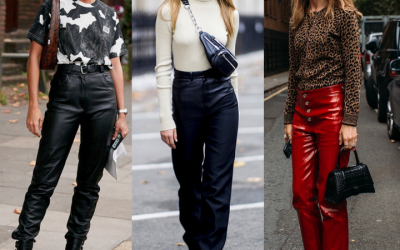It’s no secret that the fashion industry is one of the world’s biggest polluters. The World Economic Forum estimates that about 10% of all carbon emissions we produce come from this industry.
The good news is that we can all make choices to shop for clothes more sustainably and reduce our impact on the planet.
In this guide, we’ll discuss some common-sense tips for how to shop for clothes in a sustainable way. We’ll cover everything from choosing sustainable fabrics to considering the environmental impacts of your purchases.
So, whether you’re looking to overhaul your entire wardrobe or just pick up a few sustainable pieces, read on for some helpful advice!
Start With a Realistic Budget
When you’re trying to shop sustainably, one of the most important things to keep in mind is your budget. Sustainable fashion can be more expensive than traditional fast fashion, so it’s important to take that into account.
Unfortunately, the sustainable fashion movement isn’t quite as affordable as it could be. Fast fashion brands will probably always have an edge in the price arena.
That means you’ll likely end up paying a little more than you might expect to make your shopping choices more sustainable.
That said, there are many sustainable brands that offer high-quality products at a range of price points. You’ll still have a wide variety of choices, but you can expect to pay around 10% more than you would for traditional fashion brands.
That is unless you plan to purchase second-hand, which is among the most sustainable ways to shop for clothes. And it’s one of the best ways to buy sustainable clothing on a budget.
We’ll get into second-hand clothing a little further down. First, here are some general tips you can use to make your purchase decisions more sustainable.
Choose Sustainable Fabrics From Ethical Brands
One of the easiest ways to shop more sustainably is by choosing fabrics that are environmentally friendly. This may seem like a no-brainer, but it’s worth talking about what exactly it means for a fabric to be sustainable.
Natural fibers like cotton, linen, and wool are all good options, as they’re biodegradable and don’t require harsh chemicals to produce. Synthetic materials like polyester, acrylic, and nylon are not as environmentally friendly, as they’re made from petrochemicals that can release harmful toxins into the air and water.
Also worth noting are modern synthetic fabrics that are, nonetheless, more sustainably manufactured than traditional synthetics.
Fabrics such as Lyocell can be made from sustainably-sourced eucalyptus trees and make a smaller impact than even some supposedly eco-friendly fabrics.
Additionally, learn about brands that are trying to make a difference, such as Peppermayo, and their sustainability initiatives. Supporting a sustainable brand is a straightforward way to be more
We’d caution against being too literal with those guidelines, though. Just because a garment is made of cotton doesn’t mean it’s necessarily sustainably produced.
Consider these materials a starting point. From there, you can continue to filter out clothes based on a few other factors.
Choosing Clothes Made in Developing Countries
One of the most important considerations when shopping for sustainable clothes is whether you want to purchase items made in developing nations.
For many workers in developing countries, the fashion industry is a way out of destitution. Buying clothes that are produced there helps to support the local economy.
In fact, it’s hard to find any brand that sells clothes in bulk at affordable prices without a dubious track record of labor practices somewhere along its supply chain.
However, in many cases, brands that seek out labor in developing nations do so because they know they can get away with unfair labor practices and lowered industrial regulations.
Moreover, the consequences of shipping clothing make it difficult to justify these purchases, even from ethical brands.
That’s not to say there aren’t ethical clothing brands that outsource labor. This is why it’s important to do your research on a brand before purchasing from them and make sure their practices align with your values.
And with brands being so conscious of their social media presence these days, it’s easier than ever to find out everything you need to know. It’s often a matter of reaching out through any channel that the brand is present on.
Many brands also include information about their sustainability practices on clothing labels.
And, it’s important to point out that not all developing nations are equally impacted.
Some of the nations most vulnerable to exploitation by the fast fashion industry include:
Bangladesh, India, China, Vietnam, Ethiopia, Indonesia, Sri Lanka, and the Philippines.
Look For Committed Sustainable Clothing Brands
Ultimately, sustainable shopping comes down to being more informed about the impact of your purchases, not just looking for sustainable brands.
If you knew that it takes over 10,000 liters to cultivate just over two pounds of raw cotton, you’d certainly be more conscientious about your choices.
And one of the best places to start getting informed is to learn about certifications in the clothing industry. Sustainable fashion brands will be more than happy to advertise their adherence to these standards so it shouldn’t be hard to find.
Certifications such as the Global Organic Textile Standard (GOTS) aim to make brands accountable for more sustainable practices.
Other certifications include:
- Better Cotton Initiative (BCI) – The BCI program is built on the foundation of core production standards, which are strongly influenced by widely accepted sustainability, social justice, and economic development concepts. It also draws on supply chain management principles.
- Global Recycle Standard – The Global Recycle Standard has been developed to meet demands, in the textile industry and beyond, for verification of the number of recycled parts or ingredients in a given product. GRS offers traceability certification to ensure that claims made about products are supported by evidence.
- Oeko-Tex 100 – The Oeko-Tex Standard 100 is a worldwide uniform testing and certification system for textiles at all phases of production that gives the consumer confidence that there are no hazardous chemical residues in the end garment.
Shop Ethically By Wearing What You Purchase
One of the best ways to be increase sustainability is by wearing the clothes you purchase. And, spoiler, this flies directly in the face of the fast-fashion manifesto.
That largely boils down to asking yourself if you’ll get enough mileage out of a garment before you discard it. Essentially, you’ll probably need to exclude luxury fashion items that are little more than accessories in the form of clothes.
A simple way to do this is to follow the 30 wears rule, suggested by Olivia Firth of EcoAge. Whenever you’re considering purchasing clothing, ask yourself if you’ll wear it at least 30 times.
In fact, it’s hard to find any brand that sells clothes in bulk at affordable prices without a dubious track record of labor practices somewhere along its supply chain.
If the answer is: most likely no — it’s probably best left on the shelf.
Buy Classic, Versatile, Durable Clothing
When you are buying clothes, try to buy classic pieces that will never go out of style.
This way, you’ll be able to wear them for years and won’t have to replace them as often. For this reason, an exceptionally crafted garment can be more sustainable than clothing from fair trade brands, despite being less sustainably manufactured.
In addition, look for versatile items that can be dressed up or down depending on the occasion.
Also, try to equip your sustainable wardrobe with clothes made of durable materials that won’t easily tear or wear out. Denim, linen, and the aforementioned Lyocell are all excellent options for eco-conscious attire that can last for years.
Think of clothes as an investment that you can continue to care for over the years and will continue to produce dividends.
In addition to lasting a long time, high-quality apparel can be repaired, adjusted, and handed down.
And that leads us to the most sustainable way to shop.
Secondhand Clothes – How to Shop Sustainably on a Budget
One of the easiest ways to shop sustainably for clothes is by buying second-hand. Even the most sustainable brands can never be as sustainable as wearing clothes that are already made.
Not only does this help reduce waste, but it also saves you money in the process!
There are a number of places where you can find used clothing, including thrift stores, consignment shops, and online marketplaces like eBay or Craigslist. Often, you can find clothing from a sustainable brand this way, since they tend to last longer.
Just be sure to inspect any items carefully before purchasing them to make sure they’re in good condition.
Online shopping has the drawback of not allowing you to closely inspect what you’re purchasing. So, we’d recommend starting locally until you get a feel for the types of clothes that are worth buying secondhand.
Another option is to swap clothes with friends and family members – this helps get rid of unwanted clothes while providing new pieces for your wardrobe at the same time.
Conclusion
It is possible to shop for clothes sustainably without breaking the bank. In fact, you can spend as much or as little money as you like and still make sustainable purchase decisions.
By taking a few simple steps, such as considering where your clothes were made and how they were produced, you can easily reduce the environmental impact of your wardrobe. What are you waiting for? Start shopping sustainably today!




